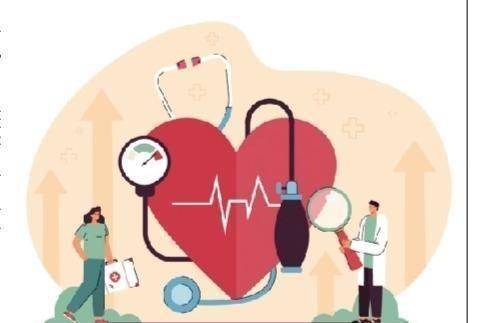Source: Liaoning Shenyang Evening News
Atrial fibrillation, or AF, is a common type of arrhythmia in the cardiovascular field. This article aims to introduce relevant knowledge about atrial fibrillation, hoping to help those in need.
As the name implies, atrial fibrillation is a state of the atria trembling. Under normal circumstances, the contraction and relaxation of the heart are coordinated and rhythmic. When atrial fibrillation occurs, the muscles of the atria vibrate rapidly and incoordination, preventing efficient blood delivery to the ventricles. It’s like an orchestra suddenly losing its conductor; the musicians play in disarray, resulting in a messy performance.
It is important to note that the presentation of atrial fibrillation patients can vary; some may not feel anything obvious, while others may experience various discomforts.
Common symptoms include the following:
Palpitations Feeling of irregular heartbeats, sometimes fast and sometimes slow.
Fatigue Insufficient blood supply to the body due to decreased cardiac pumping efficiency.
Chest tightness Feeling of pressure or discomfort in the chest cavity.
Dizziness Dizziness caused by insufficient blood supply to the brain.
These symptoms can be acute or gradually worsen. If any of the above symptoms appear, medical attention should be sought immediately.
The diagnosis of atrial fibrillation requires combining the patient’s symptoms with the results of tests such as electrocardiograms and echocardiograms. An electrocardiogram is a commonly used examination method in clinical settings that helps doctors diagnose atrial fibrillation by recording the electrical activity of the heart.
The treatment of atrial fibrillation aims to restore the heart’s normal rhythm, alleviate symptoms, and prevent complications. Treatment plans vary depending on the type of atrial fibrillation, the severity of symptoms, and the overall health condition of the patient.
Common treatment methods include:
Medication Therapy
Using anti-arrhythmic drugs to restore or maintain normal heart rhythm, or using medications to control heart rate and reduce the risk of blood clots.
Electrical Cardioversion
Using short, low-energy shocks to the heart to restore normal rhythm.
Radiofrequency Ablation
Using high-frequency radio waves to destroy the abnormal electrical circuits causing atrial fibrillation.
Surgical Treatment
In some cases, surgical intervention may be needed to treat atrial fibrillation.
Along with medical treatment, atrial fibrillation patients should also manage their daily lives.
Avoid Triggers
Avoid substances that may trigger atrial fibrillation, such as caffeine, alcohol, and certain medications.
Regular Schedule
Maintain adequate sleep and avoid overexertion.
Healthy Diet
Eat a balanced diet and reduce the intake of high-fat, high-salt, and high-sugar foods.
Moderate Exercise
Choose suitable exercise methods based on physical condition, such as walking or swimming.
Emotional Management
Stay calm and avoid excessive tension and anxiety.
Preventing and treating atrial fibrillation requires avoiding the following common misconceptions:
Myth 1: Atrial fibrillation is not a serious illness and does not need attention. If not treated in a timely manner, atrial fibrillation can lead to serious consequences like stroke or heart failure.
Myth 2: Atrial fibrillation can only be treated with surgery. Surgical treatment is just one of the options for atrial fibrillation and not the only choice.
Myth 3: Atrial fibrillation patients cannot exercise. Moderate exercise is beneficial for atrial fibrillation patients, but it should be


